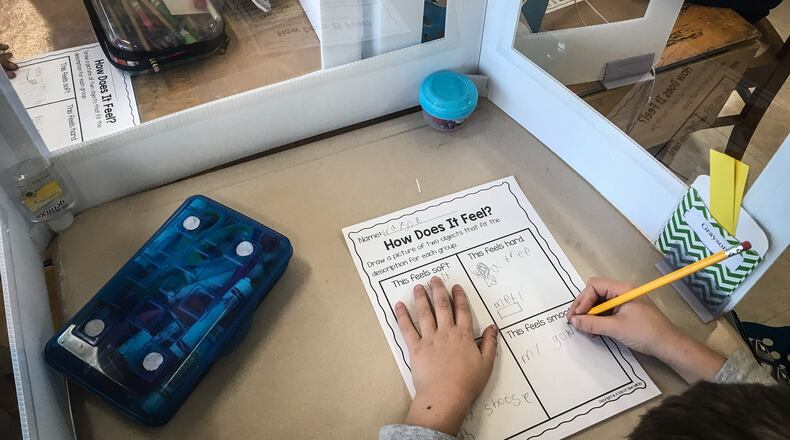House Bill 200 would remove the overall grade that each school and district has gotten in the past, and would go from six primary components down to five. The “Prepared for Success” component that includes numerous high school metrics would no longer be graded, while the remaining five measures — achievement, progress, graduation, gap closing and third-grade reading — would be tweaked.
“In the same way that our children are more than a letter grade on a test, we know our schools are also more and can only better serve our children with a better evaluation system,” said state Rep. Phillip Robinson, D-Solon, who co-sponsored the bill with Freeport Republican Rep. Don Jones.
According to an analysis by Ohio’s Legislative Service Commission, HB 200 includes a more forgiving way of calculating a school’s performance index on state tests, and would require the state to choose whichever of two gap closing and year-over-year progress measures are more favorable to each school.
The third-grade reading measure would be based on the state promotion score, not the proficiency score, which is higher. It also would grade schools only on those students who stayed with the school all the way from kindergarten through third grade.
Instead of letter grades, schools and districts would be labeled in each area with one of six ratings — significantly exceeds expectations, exceeds expectations, meets expectations, making substantial progress toward expectations, making moderate progress toward expectations, or in need of support.
The cut scores for each of those six ratings would be set by the state board of education.
Three prominent organizations that represent Ohio school boards, superintendents and school treasurers said they support the new bill.
Dave Axner, executive director of the Buckeye Association of School Administrators, called the bill an important step in making the state report card “a more fair, accurate reflection of the great work being done in Ohio’s schools.”
“Nothing about an overall school letter grade properly informs a parent or community about what is going on in their schools,” Ohio School Boards Association CEO Rick Lewis added.
The Fordham Institute, which has produced several reports and proposals on Ohio’s report card in the past decade, strongly disagrees.
“I think it’s a very flawed proposal, to the point of almost ridiculous,” said Aaron Churchill, the Ohio research director for Fordham. “The lack of an overall rating just doesn’t give families and communities a holistic sense of what’s happening in the schools. (That rating) is a bottom line, sort of like a student’s GPA. It rolls up their performance in a bunch of different subjects in a fairly user-friendly way.”
That has always been one of the challenges of report card design — making the document simple and user-friendly enough for those taking a quick look at it, but also accurate, plus detailed enough for analysts who want to go deep into the data.
The Ohio Education Association, the state’s largest teachers union, “welcomed” the introduction of HB 200, but President Scott DiMauro said OEA plans to work with legislators and others “to strengthen the bill.”
“OEA supports systematically overhauling the state’s report card system, eliminating the misleading A-F letter grades and reducing the emphasis on standardized test scores, while reorienting the focus to opportunities for success that schools are providing to students,” DiMauro said.
There’s also a group of educators from a network of urban schools that has met with state leaders and legislators over the past two years to present their own report card plan.
Ohio Excels, a prominent business/education coalition, thinks Ohio’s report card needs improvement and is confident change will happen this spring. But President Lisa Gray said her group has concerns about many elements of HB 200, pointing to third-grade reading and year-over-year progress measures, as well as the “expectations” terminology.
“We’re a little bit concerned that some of those labels may not be particularly meaningful to parents, so how can we make sure it is understood well?” Gray said.
House Bill 200 will have its first hearing late Tuesday afternoon before the House Primary and Secondary Education Committee.
Churchill said HB 200 would allow schools to cherry-pick data they like, causing potential equity problems if data for highly mobile and low-income students is discounted.
“This report card (proposal) is great if you want to make schools look good, and in a sense paper over challenges students are having,” he said. “I think that’s a huge problem. Some schools are doing tremendous things for kids. We also know a number of students are having difficulties meeting rigorous benchmarks.”
About the Author

